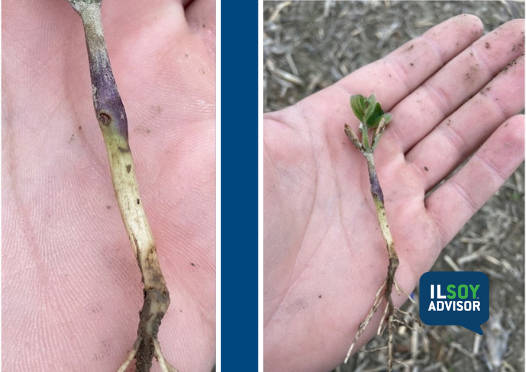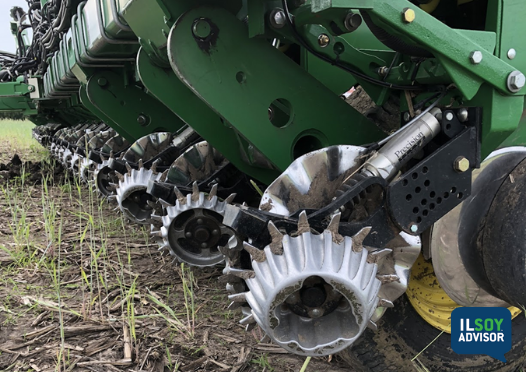ILSOYADVISOR POST
Agronomy: Tricking Out A Soybean Planter for 2016
For most of my career working with soybeans the planting process has been a controlled spill at best. We used to drill quite a few beans and when setting the depth Grandpa always said, “If you don’t see a few beans on top of the ground you are planting too deep.” Well, we also planted 100# per acre with the drill and that doesn’t cut it with $50 plus per bag of soybean seed.
While some things are still table stakes—such as planter maintenance, the use of talc or graphite, proper calibration and using an appropriate seed size plate on vacuum planters—there are some details that need to be addressed on even these issues.
Most of our soybean seed is treated with a fungicide at the very least, while many are getting as much as 7 – 8 oz. per hundred weight of combinations of fungicides, insecticides, nematicides, biologicals, inoculants and micro-nutrients. This can greatly affect seed plantability and the speed with which the seed flows through the planter, so you really need to allow for that when calibrating. Also, talc and graphite can cause bacterial mortality if applied to seed that is treated with an inoculant. We have found that some of the new dry seed flowability products help with this without damaging the rhizobia in the inoculant. With the high cost of soybean seed today we need every advantage to increase ROI, so getting the maximum number of planted seeds to emerge just makes sense.
Next I decided to examine how we can improve seed placement using some of today’s technology. To learn a little more about what tricking out a soybean planter involves, I called one of our local Precision Planting dealers, Matt Schenk of Poseyville, Indiana. Matt is doing some innovative things to improve soybean stands and maximize seed spacing per acre.
We know that planting depth on soybeans is very important for uniform emergence; we need beans in the same field to emerge within 24 – 36 hours of each other, just like we target for corn. Matt likes to install down-force units on a soybean planter to better control the depth. This will make sure that you have a consistent depth of planting and timelier emergence. He also talked about the value of row clutches to make sure we aren’t double planting expensive seed in point rows. When you are looking to efficiently plant 140,000 seeds per acre, every little bit of savings helps your bottom line.
This brings us to the final point Matt brought up; in corn we are looking to get maximum sunlight to each plant throughout the growing season with precise planter spacing, but we don’t worry about this with soybeans. Matt asks, “Why aren’t we doing the same thing for soybeans?”
He is doing some work to see if he can achieve precise singularity with soybeans (plants exactly 3 inches apart in 15-inch rows) like we expect with corn planter drop. This would allow for uniform planting arrangements of 125,000 seeds per acre or even less to maximize field area. This would not only increase seeding rate efficiency, but speed canopy closure for weed control as well.
At this point I think technology is creating more questions than supplying answers for soybean seeding, but it gives us an area to improve yields and ROI that maybe we haven’t been considering too much. I enjoy visiting with individuals like Matt who are thinking outside the box to help us use technology in new, innovative ways.
Mike Wilson is a Specialty Products Marketing Coordinator at Wabash Valley Service Company. For over 20 years he has been working with farmers in ten counties in southeastern Illinois to improve economic yield in soybeans, corn and wheat. Mike has been a CCA since 1994 and is enjoying being a part of the Soy Envoy program.





Comments
Add new comment